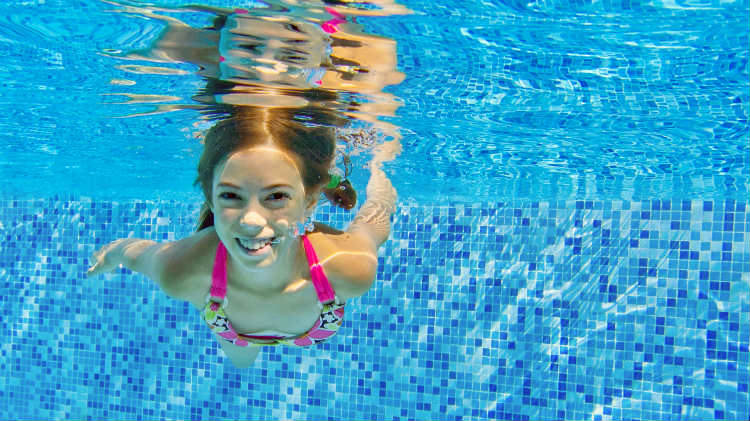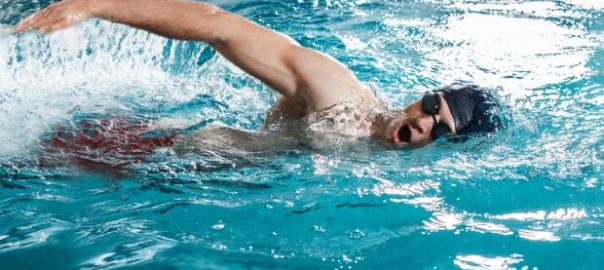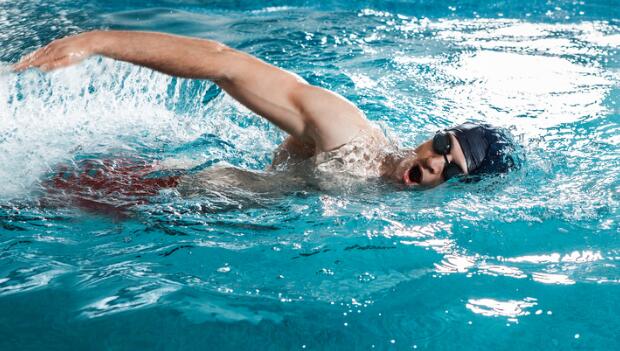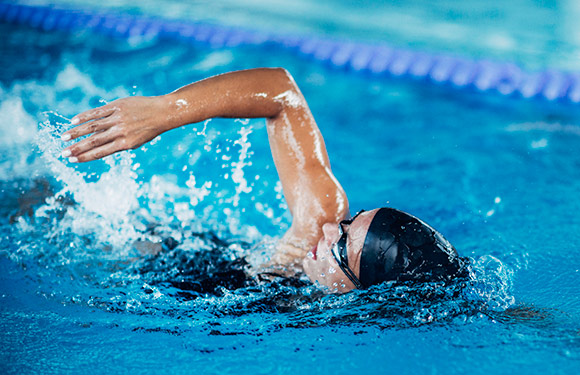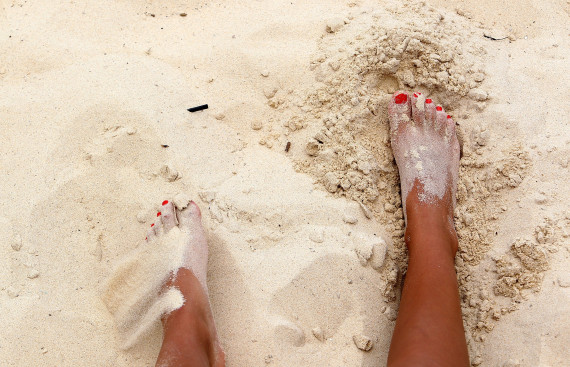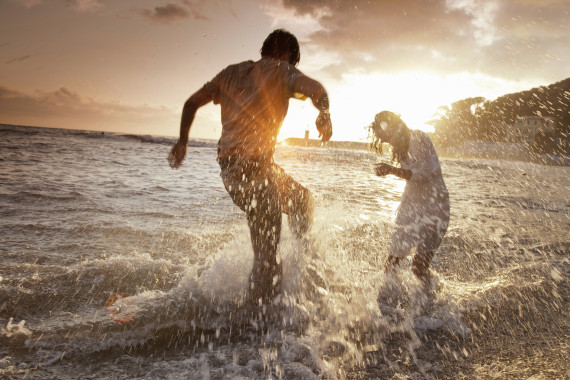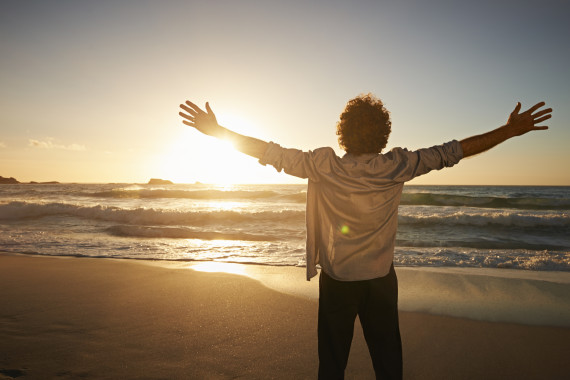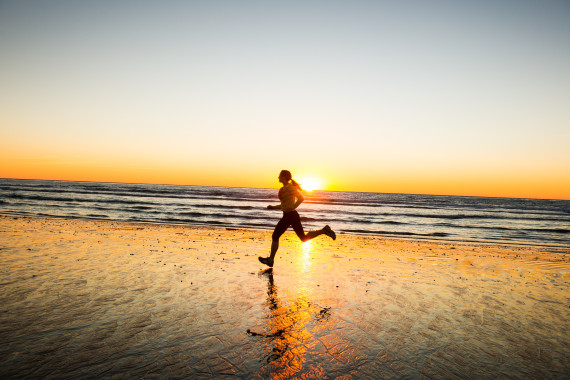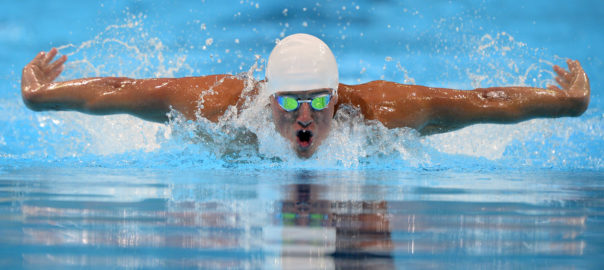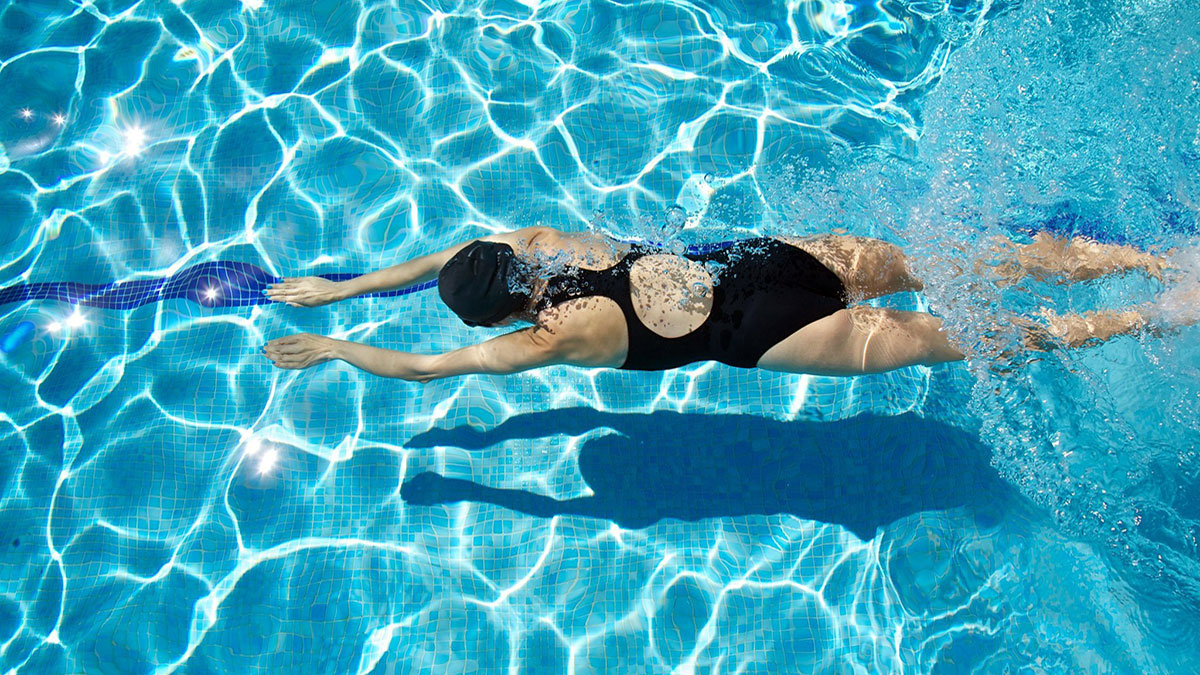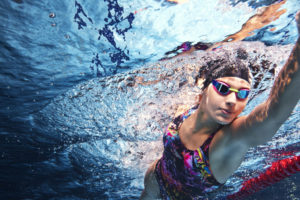Die Zeit zwischen Weihnachten und Silvester eignet sich am besten, um Bilanz für das vergangene Jahr zu ziehen und sich Gedanken über gute Vorsätze für das neue Jahr zu machen. Spätestens im neuen Jahr entsteht dann der Impuls, alles besser zu machen als vergangenes Jahr und die Vorsätze in die Tat umzusetzen. Haben Sie schon gute Vorsätze für das neue Jahr gefasst? Wenn nicht: Wir verraten 10 gute Vorsätze, die der Gesundheit gut tun, und nennen kleine Tricks, die zur Umsetzung beitragen.
1. Weniger Stress
Stress begleitet heutzutage nicht nur Berufstätige. Auch Schüler und Hausfrauen leiden darunter, weil sie den Anforderungen des Alltags nicht mehr standhalten können. Wer häufig unter Stress leidet, ist dauerhaft angespannt und riskiert Burnout und weitere körperliche Beschwerden. Deswegen sollten gestresste Personen darauf achten, den inneren Druck gezielt abzubauen.
Überlegen Sie dafür, welche Situationen besonders belastend für Sie sind und versuchen Sie, diese zu vermeiden. Entspannende Bäder nach der Arbeit und Sport wirken sich beispielsweise positiv auf das Gemüt aus. Nehmen Sie außerdem keine Arbeit mit nach Hause mit und bewältigen Sie eine Aufgabe nach der anderen. Dafür eignet es sich, Wochenpläne zu erstellen. Weihen Sie Familie, Freunde und Arbeitskollegen in Ihren Vorsatz, Stress zu vermeiden und besser abzubauen, ein. Diese können Sie bei Ihrem Vorhaben unterstützen.
2. Mehr Bewegung und Sport
Sport hält gesund, macht fröhlich und steigert die Konzentration. Machen Sie sich bewusst, weshalb Sie mehr Sport treiben möchten. Konkrete Ziele wie Abnehmen oder mehr Sport für die Gesundheit dienen bei jeder Sporteinheit als Motivation. Zudem helfen sie dabei, die richtige Sportart zu finden. Denken Sie anfangs immer wieder daran, dass Sport in der kühlen Jahreszeit aufmuntert und das Immunsystem stärkt.
Um den richtigen Sport zu finden, können Sie zunächst unterschiedliche Sportarten ausprobieren. Oft hilft ein Trainingspartner bei der Motivation. Auch eine Sportgruppe oder ein Verein verpflichten und helfen durch regelmäßige Trainingszeiten eine Routine im Alltag zu schaffen. Trainingserfolge können Sie mit Kleinigkeiten belohnen.
3. Gesündere Ernährung
Eine gesunde Ernährung zeichnet sich durch ausgewogene und abwechslungsreiche Kost aus. Dazu zählen viel Obst, Gemüse, Fisch, fettarme Milch und fettarmes Fleisch sowie Mineralwasser. Eine solche Ernährung wirkt sich nicht nur positiv auf die Gesundheit aus, sondern steigert auch das Wohlbefinden.
Für eine langfristige Umstellung der Ernährung müssen Sie alte Gewohnheiten aufgeben und diese durch Neue ersetzen. Machen Sie sich dafür am besten jede Woche einen Koch- und Ernährungs-Plan. Nimmt die ganze Familie an dem Vorhaben Teil, ist es noch einfacher, die Ernährung umzustellen. Damit Ihnen die Umstellung leichter fällt, können Sie sich zwischendurch ruhig mit etwas Schokolade oder Ähnlichem belohnen – nur übertreiben sollten Sie es nicht.
4. Mehr Zeit für sich selbst
Um das Leben im Gleichgewicht zu halten, sind Freizeit und Zeit für sich selbst sehr wichtig. In dieser Zeit können Sie Hobbys nachgehen, sich mit Freunden treffen und entspannen. Das hält die Psyche fit und leistungsfähig und wirkt sich gleichzeitig positiv auf die Gesundheit aus.
Halten Sie jede Woche mindestens einen Tag oder einige Stunden täglich in Ihrem Terminkalender für Ihre Zeit mit sich selbst frei. Am besten sollte es immer der gleiche Tag oder die gleiche Uhrzeit sein. So entsteht nämlich eine Routine, die sich in Ihren Alltag integrieren lässt. Um Unterstützung zu erhalten und eine größere Verbindlichkeit zu erzeugen, sollten Sie die Termine Familie und Freunden mitteilen.
5. Weniger Rauchen
Rauchen lässt nicht nur die Haut altern und schadet der Lunge, es kann auch die Lebenserwartung um bis zu zehn Jahre verkürzen. Bereits nach einem Jahr Abstinenz vergrößert sich das Lungenvolumen wieder und die Risiken für Herzerkrankungen und Lungenkrebs nehmen deutlich ab.
Wenn Sie mit dem Rauchen aufhören möchten, sollten Sie sich kleine Ziele setzen. Reduzieren Sie zunächst nach und nach die Anzahl an Zigaretten. Suchen Sie einen Ersatz wie Kaugummis für die Zigarette und nutzen Sie Ihre fünf Minuten Raucherpause auf eine andere Art und Weise. Machen Sie sich dafür eine Liste mit Dingen, die Sie anstatt des Rauchens tun könnten.
Der Körper benötigt effektiv nur drei Tage zur Entwöhnung. Oft hilft es auch, sich Verbündete zu suchen und kleine Wetten abzuschließen, wer es länger ohne Zigarette aushält. Dies steigert den Ehrgeiz für das Vorhaben enorm. Da der Nikotinentzug ein Defizit der Endorphine verursacht, ist es ratsam, sich in der Entwöhnungsphase mit Kleinigkeiten zu belohnen. Durch diesen Trick werden Glücksgefühle erzeugt.
6. Weniger Alkohol
Bereits ein alkoholisches Getränk pro Tag schadet dem Körper. Von dem Verzicht auf regelmäßigen Alkoholkonsum profitiert nicht nur die Leber, sondern auch das Immunsystem kann sich wieder voll und ganz der Abwehr von Infekten widmen. Außerdem nimmt das Krebsrisiko ab und die Gehirnleistung steigt.
Wenn Sie weniger Alkohol trinken möchten, sollten Sie Ihre Trinkgewohnheiten ändern und sich bewusst machen, wie schädigend Alkohol für die Gesundheit ist. In einem ersten Schritt ist es hilfreich, keinen oder zumindest weniger Alkohol im Haus zu halten. Das hilft dabei, Alkohol nur noch zu besonderen Anlässen zu trinken. Wenden Sie kleine Tricks an, um sich schrittweise zu entwöhnen: Trinken Sie lieber Säfte, Wasser und Softdrinks zu Ihrem Essen, nehmen Sie kleinere Schlucke und kleinere Gläser.
7. Ausreichend schlafen
Müdigkeit sorgt für schlechte Konzentration und führt auf Dauer zu einem geschwächten Immunsystem. Um sich am Morgen erholt und frisch zu fühlen, sollten Sie daher genügend schlafen.
Nehmen Sie sich vor, Ihr persönliches Optimum an Schlaf täglich einzuhalten. Dafür sollten Sie frühzeitig ins Bett gehen. Lassen Sie dafür Fernsehsendungen auch mal ausfallen und verabschieden Sie sich von späten Treffen etwas früher. Stehen Sie zeitig auf und vermeiden Sie Mittagsschläfchen, sodass Sie am Abend früh müde werden und gut einschlafen können. Nach einigen Wochen pendeln sich die Schlafenszeiten und die Länge des Schlafes ein.
Um schnell einzuschlafen hilft es, das Zimmer gut abzudunkeln und die Zimmertemperatur bei 17 Grad Celsius zu halten. Trinken Sie einen Kräutertee und lesen Sie ein Buch vor dem Schlafen gehen – das kann die Müdigkeit fördern. Die letzte Mahlzeit sollten Sie drei Stunden vor dem Schlafen einnehmen.
8. Mehr Zeit für Familie und Freunde
Für eine größere Zufriedenheit im Freundeskreis und in der Familie ist es sehr wichtig, sich genügend Zeit für beides einzuräumen. Vereinbaren Sie mit Freunden daher weit im Voraus Verabredungen oder legen Sie einen bestimmten Tag in der Woche oder im Monat für Treffen fest. Behandeln Sie Verabredungen mit Freunden mit gleicher Priorität wie geschäftliche Termine. Das macht es Ihnen schwieriger, Treffen abzusagen.
Planen Sie Familientage in Ihren Alltag ein. Bei der Planung sollten Sie bereits festlegen, was genau Sie zusammen unternehmen werden. Vor allem Kinder freuen sich über Ausflüge, Spiele und Freizeitaktivitäten. Das fördert den Zusammenhalt und macht die gesamte Familie glücklicher. Feste Pläne schüren zudem die Vorfreude und machen es schwieriger, Ausflüge zu verschieben. Am besten legen Sie zu Jahresbeginn schon erste Termine fest. Teilen Sie ihre Vorhaben außerdem auf der Arbeit mit. Das informiert Chefs und Arbeitskollegen frühzeitig darüber, dass Sie an bestimmten Tagen für Überstunden nicht zu haben sind.
9. Zur Vorsorge gehen
Ab 35 Jahren hat jeder gesetzlich Versicherte einen Anspruch auf Vorsorgeuntersuchungen zur frühen Erkennung von Erkrankungen. Informieren Sie sich zuerst darüber, welche Vorsorgeuntersuchungen für Ihr Alter angeboten werden. Haben Sie eine familiäre Krankheitsgeschichte? Dann sollten Sie sich früher untersuchen lassen.
Machen Sie bereits zu Beginn des Jahres Termine bei Ärzten, sodass die Termine fest in Ihrem Kalender eingeplant sind. Belohnen Sie sich ruhig nach jedem Arztbesuch mit einer Kleinigkeit. So erscheint der Gang zum Arzt weniger lästig und lässt sich mit einer schönen Tätigkeit verbinden.
10. Weniger Fernsehen
Wer viel Zeit vor dem Fernseher verbringt, schadet durch die mangelnde Bewegung seinem Körper. Die Gedächtnisleistung und das Gewicht sind besonders von negativen Folgen betroffen. Vor allem auf die Frühentwicklung von Kindern wirkt sich ein hoher Fernsehkonsum negativ aus.
Um weniger Fern zu sehen, sollten Sie bestimmte Fernsehzeiten arrangieren. Wählen Sie Ihr Programm mit Bedacht und versuchen Sie, maximal eine Stunde am Tag vor dem Fernsehgerät zu verbringen. Machen Sie sich klar, dass Sie die Zeit vor dem Fernseher viel sinnvoller nutzen könnten. Lesen Sie beispielsweise ein Buch oder eine Zeitung oder investieren Sie mehr Zeit in Kochen und Freunde.
Mehr zum Thema: gesundheit.de

